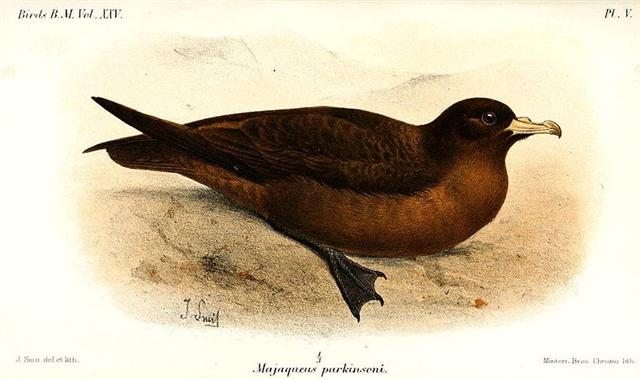Below I have updated the bird list:
I have combined kumara with kiakia into a single white tern, because kumara apparently is closely connected with kiakia. Likewise I have combined ruru with taiko into a single item: "The next two names on the list are ruru and taiko (numbers 10 and 11). While those two represent two different species, it should be pointed out that the combined name ruru-taiko refers in MAO. to a black petrel (Procellaria parkinsoni). There are no cultural data available for ruru, which seems to be derived from PPN. *lulu 'owl', or for taiko (compare RAR. taiko 'black petrel', MGV. tiaku 'petrel?, omen of death'), but the textual association of taiko and spirits should be kept in mind (Campbell 1971:113)." (Barthel 2) The picture below is from Wikipedia and the artist is Joseph Smit (1896):
Owls arrive with the night, and we should remember where the owl is located in the Mayan calendar. My idea is that the list should be reorganized into 9 + 5 = 14 items (or rather into 8 + 5 = 13 items, which will be motivated below). My double bird items ought to indicate the 2nd part of the list, i.e. the redtailed tavake should be the last bird of the 1st part. Page 72 of Manuscript E is where these birds are located and page 72 (= 360 / 5) enumerates 20 * 15 = 300 birds, which we immediately can identify as the 10-month cycle of Sun. 20 * 15 = 10 * 30, i.e. there are 2 halfmonths in each month. Manu tara, the first name mentioned on the page is a special case, therefore there are not 16 but 15 times 20: he manu tara.erua kauatu te huru.i too mai ai With items 2-5 in the table above (pi riuriu, kava eoeo, te verovero, and ka araara) being the development stages of young manu tara birds it is also clear that the first bird, manu tara, is more of an introduction than a real item on the list. We need to investigate what kauatu te huru.i too mai ai might mean. |
